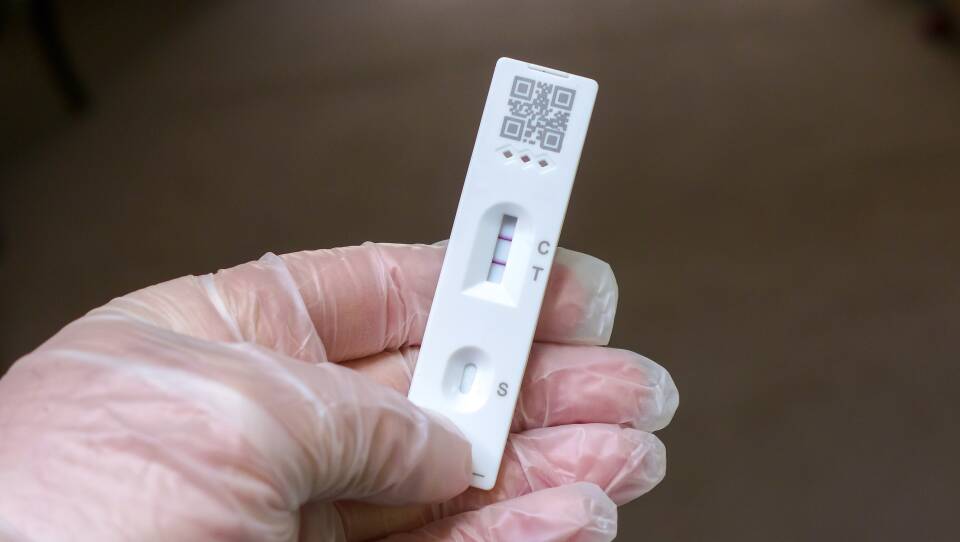Nearly three years into the COVID-19 pandemic, another new strain of the virus is making headlines. This time, it’s the XBB subvariant of omicron — a combination of two pre-existing omicron subvariants — which, according to data from the Centers for Disease Control and Prevention , has gone from a blip on the epidemiological radar in New England in late October to the dominant iteration of the virus in the region as 2022 draws to a close.
Experts say the current evidence indicates that existing tools — including vaccines, tests and medication treatments — all appear effective against the new subvariant. But the rapid spread suggests that XBB is more contagious than other strains — and also more adept at evading the immune systems of people who’ve already contracted and recovered from other strains of the coronavirus.
“The properties of the virus that the immune system sees, like the spike protein, are different in a way that causes antibodies from prior infections to not bind as efficiently,” said Sam Scarpino, the director of AI + Life Sciences at Northeastern University. “For individuals that have been previously infected … their antibodies will not neutralize XBB, and they can be reinfected.”
The World Health Organization says early data suggests people who caught COVID-19 before the omicron wave (which hit Massachusetts in late 2021) are more likely to be susceptible to infection from XBB than those who were sickened by another omicron strain.
That’s the bad news. But Scarpino says there’s good news as well — starting with the fact that, based on early research , the bivalent omicron boosters that have been available for months are effective against the new subvariant, especially against severe disease in those who do get ill.
That assessment is echoed by John Brownstein, the chief innovation officer at Boston Children’s Hospital and professor of biomedical informatics at Harvard Medical School.
“I think it’s way too early to tell whether this variant has any specific concern around severity,” Brownstein said. “It has growth advantages, so it’s spreading quickly. But it highlights the importance of getting that bivalent booster, which is a direct target to the omicron variant, and that’s really one of the most important insights we can get.”
Cassandra Pierre, the medical director of public health programs and associate hospital epidemiologist at Boston Medical Center, says there’s yet another reason to react in a measured manner to XBB’s rise.
“There is no indication at this point — no data — to show that XBB or the other subvariants that are circulating at this point have any ability to escape the therapeutic effect of our antivirals,” she said, citing Paxlovid and Remdesivir as examples. “So in addition to the very important prevention tools we have in our arsenal, we also have treatments.”
It's also important to note that the rapid tests currently available for at-home use should be effective when it comes to detecting XBB infection, making them a valuable tool for pre- and post-New Year's screening.
“Because we have the potential for a surge with the mixing of people, the gatherings, the mobility, the waning of immunity, we just need to be careful as we head into these holiday gatherings,” Brownstein said. “So of course, if you’re sick, you should stay home. If you can test the day of a gathering, that’s ideal.”
Brownstein also suggests utilizing what he calls situational masking, while taking public transportation or in other large, crowded spaces.
“That will help reduce the overall risk of transmission at your holiday gatherings, but also help mitigate a potential larger surge and … impact on our hospitals, which for many months have been dealing with capacity concerns and a really strained workforce,” Brownstein said.
Pierre advises taking masking a bit further over the next few days, given XBB’s seemingly high transmissibility and the close quarters in which many of us are likely to find ourselves.
“If you’re going to an outdoor space, I recommend trying to distance yourself from others at least 6 feet,” she said. “But if you’re finding yourself in a densely packed crowd, even though it’s safer than being indoors, you may still want to put on that mask."
Scarpino, for his part, notes that more ventilation is always preferable to less when it comes to minimizing the spread of COVID-19, and urges Boston area residents to treat the balmy temperatures forecast for the holiday weekend as an epidemiological asset.
“Open the windows up,” he said. “Go up on the rooftops and the patios. Go out to First Night … and take advantage of the warm weather.”








